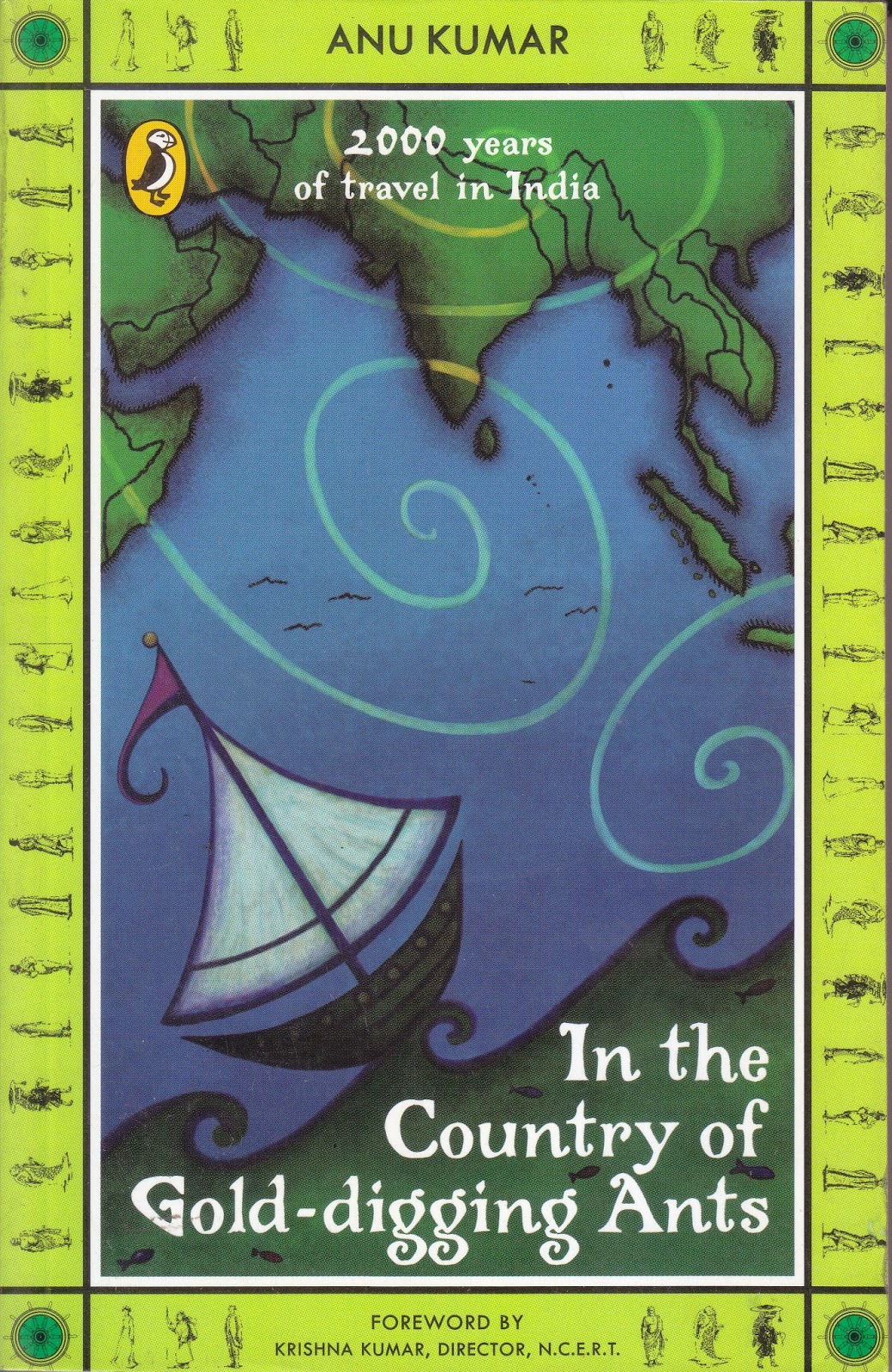History and Travel
The Book
In the County of Gold-digging Ants
2,000 years of travel in India
Puffin Books
Published by Penguin Books India 2009
The Author
The Cover
The Reviews
Share 2 reviews I found online and quite agree with the
later that says that the book is for those aged 8 – 80; if one finds the
details missing one can launch off online from the leads the book provides.
The Musings
Intriguing how even then
It was difficult to understand ‘India’ on account of
treating it as one unit. (for some
reason recalled Javed Akhtar’s lyrics) . We are an enigma?
Extreme inequality was more of a norm than an exception. A
friend shared of how after all the ‘development actions’ we have managed to
reach the inequality levels we were at, a century ago!
Haldie contrasted the poverty and inadequacy of primary education with the limitless riches of the universities she had visited, in Aligarh, Bombay and Hyderabad, where there were professors donned in scholarly robes and the students no different from those in any English university. She writes in her book ‘What sort of India would there have been if the English had spent their energy on the uplift of the peasant instead of heaping the benefits as well as the curses of westernization on the higher middle classes and the ruling families’.
He also could not understand this coexistence of the
ridiculous with the sublime: that the very people who could measure the
circumference of the earth with near 100 percent accuracy could also believe
that the earth rested on the horns of a cow, that in turn stood on a fish.
**
The line below, of course, quickly brought to mind Valmik Thapar’s
Exotic Aliens; the saga on lions and more where such hunting grounds were elaborately talked of
Halide Edib
That evening Governor-general Willingdon’s son and
daughter-in-law were also visiting Agra and had gone out hunting with a local
king. They came back reporting success – seven wild beasts, including tigers
and lions. The rajas maintained a kind of artificial jungle where the majestic
beasts of the wild were drugged and put in the way of the distinguished guests
who could not miss shooting them while remaining safe.
**
This was fascinating
(In Cooch Behar or Couche) There are hospitals for sheep, goats, dogs, cats, birds and
all kinds of living creatures, which looked after these animals when they
became old or crippled.
**
The allurement with wildlife had me eek this out!!
Not having his fill of ants, elephants and tigers,
Megasthenes also reported about dogs of great strength and courage, that would
not let go their prey till water was poured into their nostrils. Most animals,
he says, that were tame in his land were wild in India. Megasthenes spoke of
horses that were one-horned and had heads like those of deer.
In India there were three species of parrots, he said, and
when taught to speak, they became as talkative as children. There were
peacocks, the largest seen anywhere, and pale-green ringdoves. Another remarkable bird found was even more
talkative than the parrot, and of great natural cleverness. It refused to
submit to the pleasure of being fed by man, but had such a pinning for freedom,
and such a longing to warble at will in the company of its mates, that it
preferred starvation to slavery. He also described a bird called the kelass
that had a large bill and long legs.
**
And of course
Ibn Battuta reminded of Gulzaar Saab’s lovely composition.
**

Comments
Post a Comment